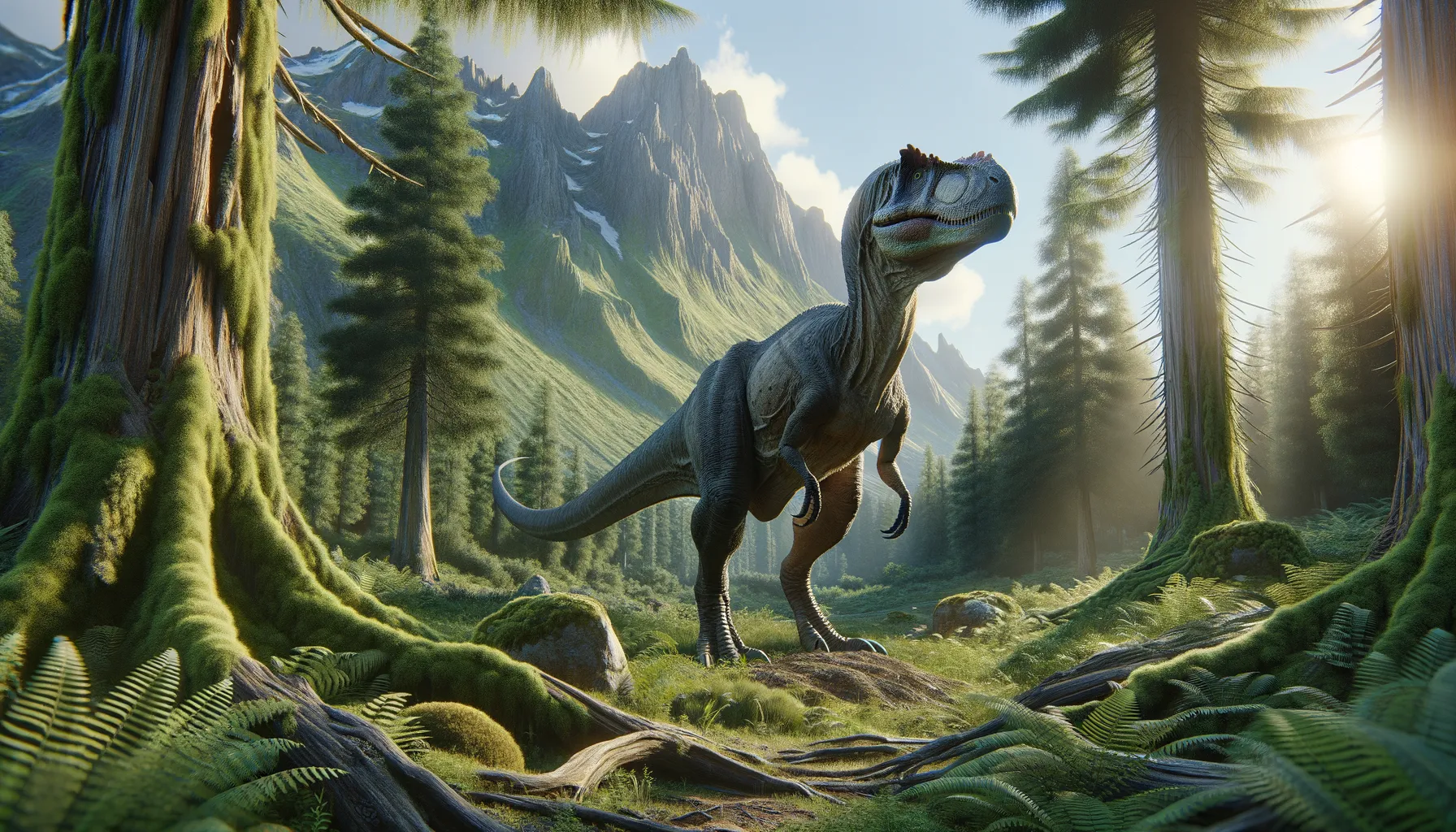
Eustreptospondylus
The Jurassic's nimble predator at work!
Period
Jurassic
Length
Roughly 5 to 6 meters long.
Height
About 1.5 meters at the hip.
Weight
Approximately 1 metric ton.
Eustreptospondylus was a mid-sized theropod dinosaur that roamed Europe during the Jurassic period. Known for its agile build and strong limbs, it was a proficient predator in its ecosystem. Its remains were first discovered in the early 20th century, and it has since intrigued paleontologists with its unique adaptations and role in the prehistoric food chain.
Diet
Eustreptospondylus was a carnivore, primarily preying on smaller dinosaurs and possibly scavenging. Its teeth were adapted to slicing through flesh, suggesting a diet rich in meat.
Hunting
Its hunting technique likely involved ambush and surprise, using the forest cover for concealment. Eustreptospondylus was likely a solitary hunter, as its moderate build was more suited to taking down prey individually rather than in a pack.
Environmental challenges
Living in the varied environments of Jurassic Europe posed numerous challenges, from shifting climates to competition for food resources. Eustreptospondylus had to adapt to a landscape where resources could vary seasonally, requiring opportunistic feeding habits. Floodplains and river systems would have presented barriers but also opportunities for fishing and scavenging. The presence of larger predators would have necessitated caution and careful territory navigation.
Speed
Moderate, suitable for stalking prey in woodlands.
Lifespan
Estimated around 15-20 years.
First discovery
Discovered in England during the early 20th century.
Fun Facts
- Eustreptospondylus was a carnivorous dinosaur that lived during the Middle Jurassic period around 165 million years ago.
- Its name means 'well curved vertebra', highlighting its distinctively shaped backbones.
- Eustreptospondylus fossils were first discovered on an island, leading some scientists to believe it might have been a good swimmer.
- It was a bipedal dinosaur, meaning it walked on two legs, and was likely a swift runner.
- Fossils of Eustreptospondylus have been primarily found in England, specifically on the Isle of Wight.
- Unlike some larger predators, Eustreptospondylus was relatively small, measuring about 5 meters (16 feet) in length.
- This dinosaur is often depicted as having a long, narrow skull and sharp, serrated teeth, perfect for catching prey.
Growth and Development
Eustreptospondylus likely experienced a rapid growth phase in its youth, similar to other theropods, to avoid predation. Juveniles might have formed gatherings for mutual protection, while adults led solitary lives. The development included strengthening of the jaw muscles and body for effective hunting and survival.
Habitat
This dinosaur inhabited the lush, warm environments of Europe, with abundant vegetation and water sources providing a rich biodiverse setting. Forests, floodplains, and swampy areas made up the primary terrain, supporting a wide range of potential prey. Seasonal changes in habitat would have required movements, possibly influencing migratory patterns.
Interaction with other species
Eustreptospondylus likely engaged in competitive interactions with other carnivorous dinosaurs for food. It might also have scavenged, participating in the ecosystem's balance as both predator and opportunistic feeder. Herbivorous dinosaurs would have been primary prey, shaping interspecies dynamics.
Natural lifespan
In natural, optimal conditions, it could live up to 20 years.
Reproduction
Reproduction was likely similar to other theropods, involving seasonal breeding and egg-laying. Nests were possibly built in secluded, safe areas and females might have guarded the nest from predators. Hatchlings required rapid growth to ensure survival.
Social behaviour
While primarily solitary, Eustreptospondylus might have shown social tendencies during mating seasons. Occasional aggregation could have occurred near rich food sources, although competition likely maintained a degree of separation. Younger individuals may have displayed looser affiliations for protection.
Fossil locations
The primary and most complete remains of Eustreptospondylus have been found in England. Fossils provide crucial insights into its existence and prehistoric European habitats. Specimens have been largely recovered from Oxfordshire, offering a window into its distribution.
